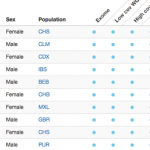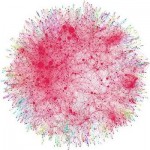3 Common Mistakes Regarding Analytics Software

Overview
Let’s face it, judging analytics software is a rare interest to have. Most people would rather spend a whole week strapped to a dentist’s chair having their teeth drilled than have to trudge through hours and hours of comparing and contrasting analytics software, many of which are similar in many ways but different in interface (which you must learn) and purpose, which you must determine.
Though the desire to avoid these topics is perfectly understandable, analytics will still guide a business in an objective manner. It is critical to have good information before any business makes a decision, so having analytics software that can best assist you is a critically important tool.
That being said, analytic software is not made equally. In order to shorten the time you might need to spend comparing analytics software, here are a three common mistakes that you can look for which will help you keep your business on track.

- Software Can Be Too General
Some analytics focus on the big picture, but fail to give proper context. In a retail setting, you might be able to see trends emerging on what products people buy and at what time, but does that information help you understand what drives these purchasing trends? Critically, do you know who buys what and when?
It is not enough for analytics to look at a big picture of what’s going on. A well connected business will have a sense for their clientele, what those individuals expect and demand of your business, and what kind of time frame they have to make a purchase. Is your business attracting wealthy individuals to your store, and if so, are they making premium purchases? Are you able to inspire premium purchases from these wealthy individuals? When and where are premium purchases made?
Your analytical software should feature information, in context, that can better help you strategize where your business is and where you need your business to go. Without that all important context, your analytics are little more than numbers on a page without the corresponding information on people to make it relevant.

- Comparing Apples to Oranges
In analytics, it’s critical to make sure you’re judging similar or comparable data sets to get an accurate feel for the numbers you’re looking at. If you’re judging apples to oranges, you’re lost.
This can be especially true when it comes to web page monitoring. If you get 500 page views from email, and 250 views from mobile, should you be pouring resources into email campaigns at the expense of mobile marketing? The answer is a resounding, “Maybe,” with absolutely nothing determined with this data set.
Mobile marketing and e-mail marketing are wholly separate subjects. How customers interact with each marketing element is varied, and the results of either marketing campaign cannot be compared to one another.
The superior option is to utilize analytics to find various different types of traffic you get in a more specific manner. How much traffic is from paid advertisements, organic interest or e-mail campaigns? Similarly, how much traffic from mobile is driven by natural interest or paid outbound approaches, etc. Getting analytics that better separate and specify the data gives a much clearer picture for what is and is not working.

- Rubix Cube Reports
A comprehensive analytics system can make a number of variables into readable data sets, but the biggest mistake that gets made with analytics software is comprehensive systems that become too comprehensive.
Access to good information is always important, but what if the method to get that information is far too complicated for anyone to use it properly? Overly complicated software can create a number of issues, from under utilization to general confusion.
Ensure that whatever analytics are being used are useful while still being user friendly. After all, people need to use these systems, so the systems need to be usable.
Conclusion
Analytics are a key driving element to making sound business decisions, but getting the right kind of software is equally critical. Common mistakes include software that offers numbers without context, numbers that do not differentiate between data sets and software that is too complicated to use properly.
Avoiding these kinds of software issues will give you the information you need without slowing your business down in unnecessary or pointless reports. Getting the right kind of information will free you up to make informed decisions on how best to guide your business with objective methodology to assist the process.
To learn more, click here for a related article.

Kalyan Banga226 Posts
I am Kalyan Banga, a Post Graduate in Business Analytics from Indian Institute of Management (IIM) Calcutta, a premier management institute, ranked best B-School in Asia in FT Masters management global rankings. I have spent 14 years in field of Research & Analytics.












0 Comments